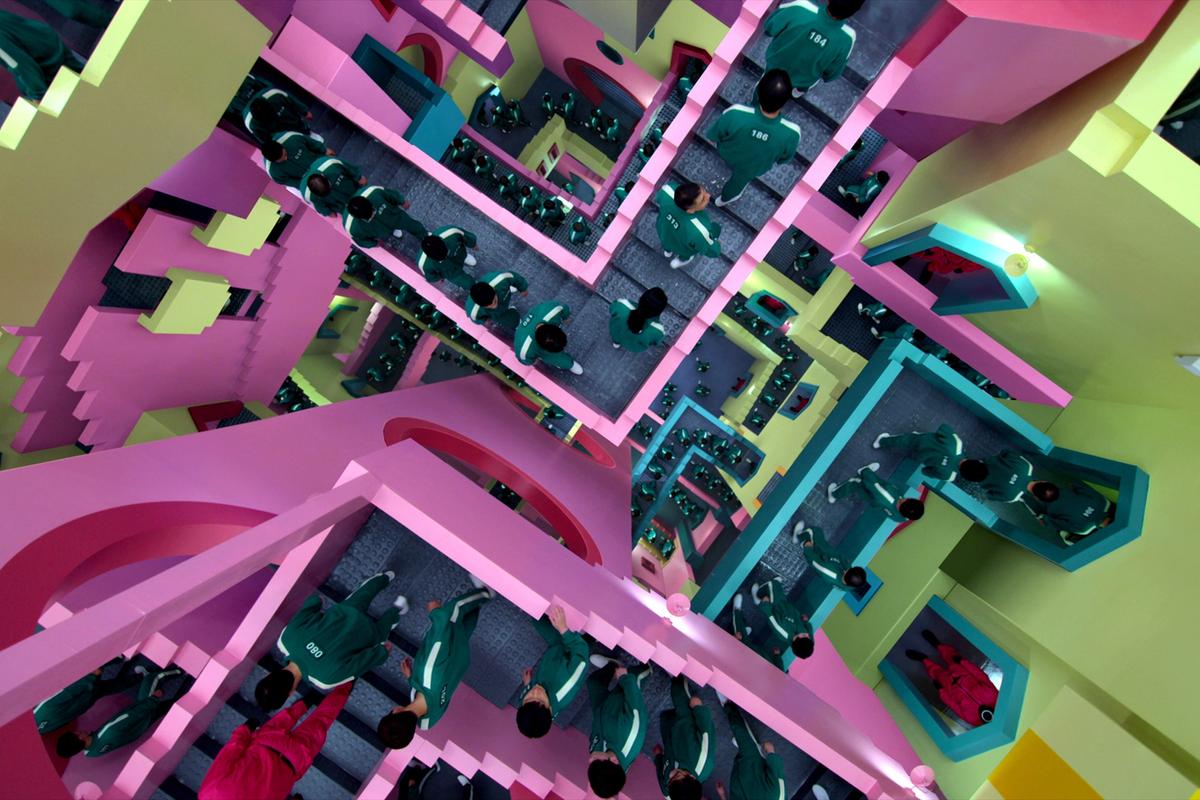Some might say there are many parallels between the cut-throat (literally) Korean survival drama Squid Game—in which competitors must “eliminate” each other in a bid to bag a tantalisingly large cash prize—and the dog-eat-dog art market, but its arty references run deeper than that.
From the outset, the creators of the show—which racked 111m views in its first 28 days, making it Netflix’s most popular series ever—have included nods to some of the most recognisable works of art of all time.
First up is Edvard Munch’s 1893 melancholic masterpiece, The Scream, which is emulated in the opening episode when player 250 is shot during the “Red Light, Green Light” game, his blood splashing across another player’s face, who lets out a petrified scream as she raises her hands to her shell-shocked face.
Then, in episode seven, which hones in on the wealthy VIP backers of the deadly Squid Game, observers have noted similarities between the golden masks which all VIPs wear and the Salvador Dalí-designed costumes worn by the elite guests of the 1972 Surrealist Ball, hosted by Baroness Marie-Hélène de Rothschild at the Chateau de Ferrières. One guest wore an apple in front of her face, a nod to René Magritte’s The Son of Man, while another wore a chopped up collage of the Mona Lisa.
In the final dinner scene in the Korean drama, the three remaining contestants are sat at a triangular table, whose reference to Judy Chicago’s The Dinner Party is unmistakeable. The 1974-79 work, consisting of a triangle-shaped table arranged with 39 place settings incorporating a collection of ceramic vulva, was Chicago’s tribute to women whom the artist considered to be the most influential yet overlooked in Western history, from Sappho to Virginia Woolf to Georgia O’Keeffe. Similarly, the only female contestant left in Squid Game is cast aside in favour of the two remaining men.
One of the most obvious borrowings—and one which director Hwang Dong-hyuk has acknowledged—is from MC Escher’s trompe-l’oeil print, Relativity (1953), which forms the basis for the series of staircases through which contestants are herded between games.
The hit drama’s artistic references crop up in other ways, too. In episode two, when the detective, Hwang Jun-ho, hunts for clues in his missing brother’s bedroom, there are a number of artistic monographs on the desk on artists including Picasso, Monet, Van Gogh and Magritte. Theory of Desire by the French psychoanalyst Jacques Lacan also makes an appearance—an allusion to the underlying theme of the show which couples desire, or greed, with death.


